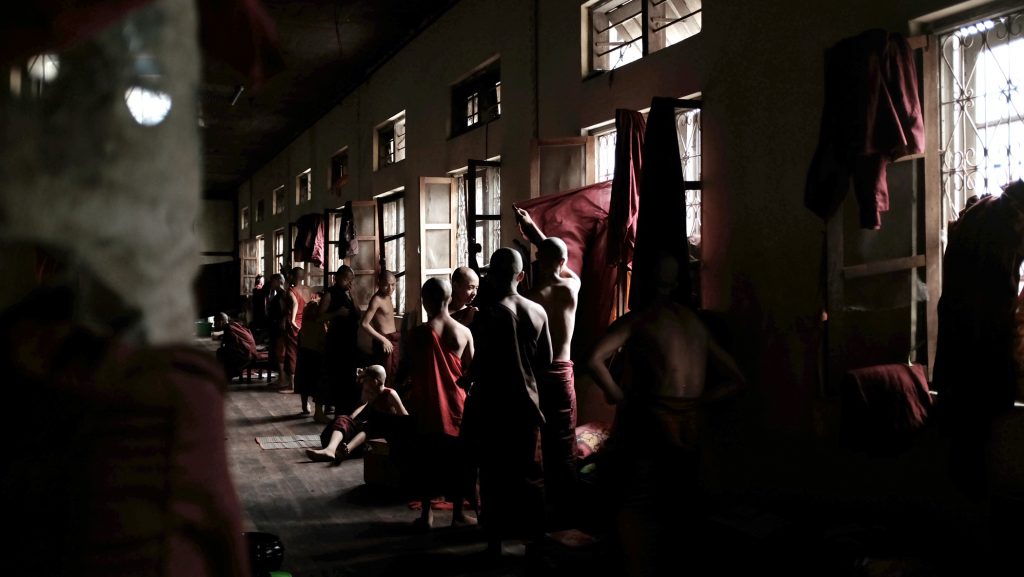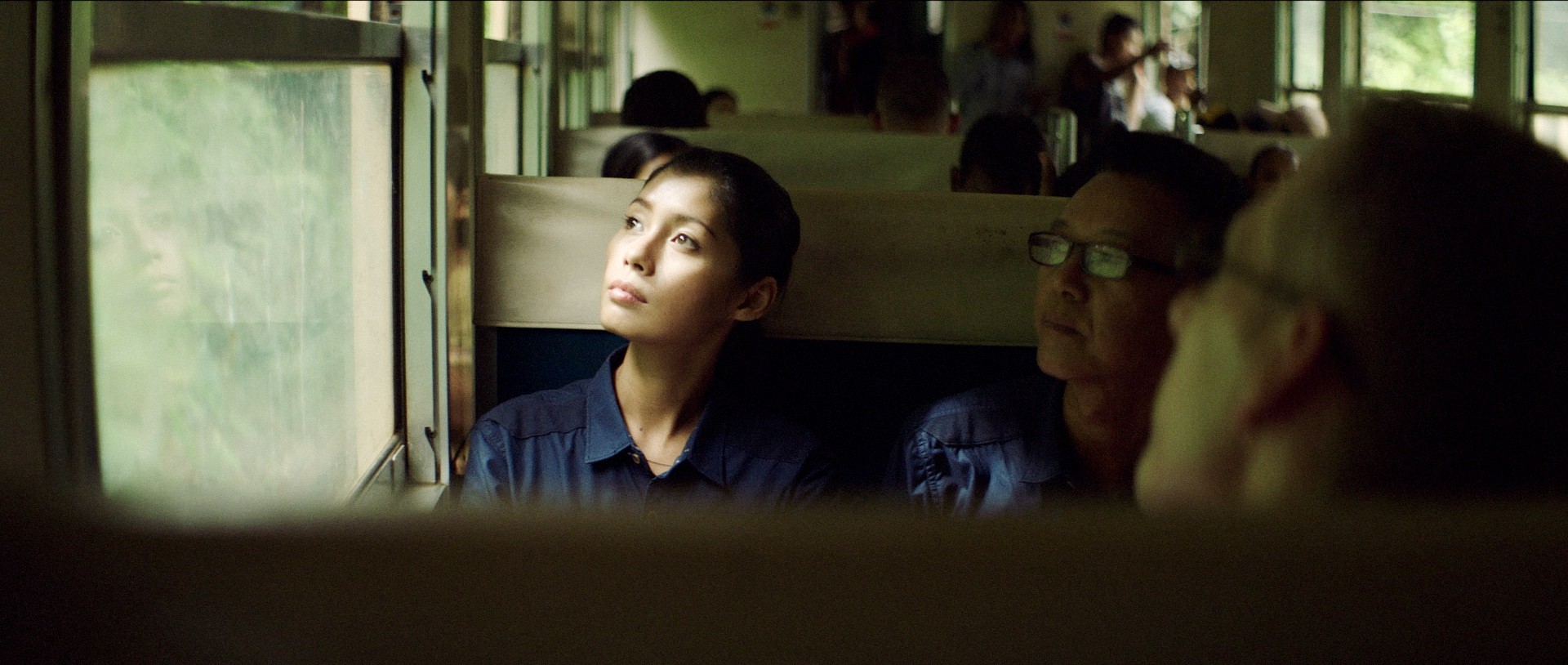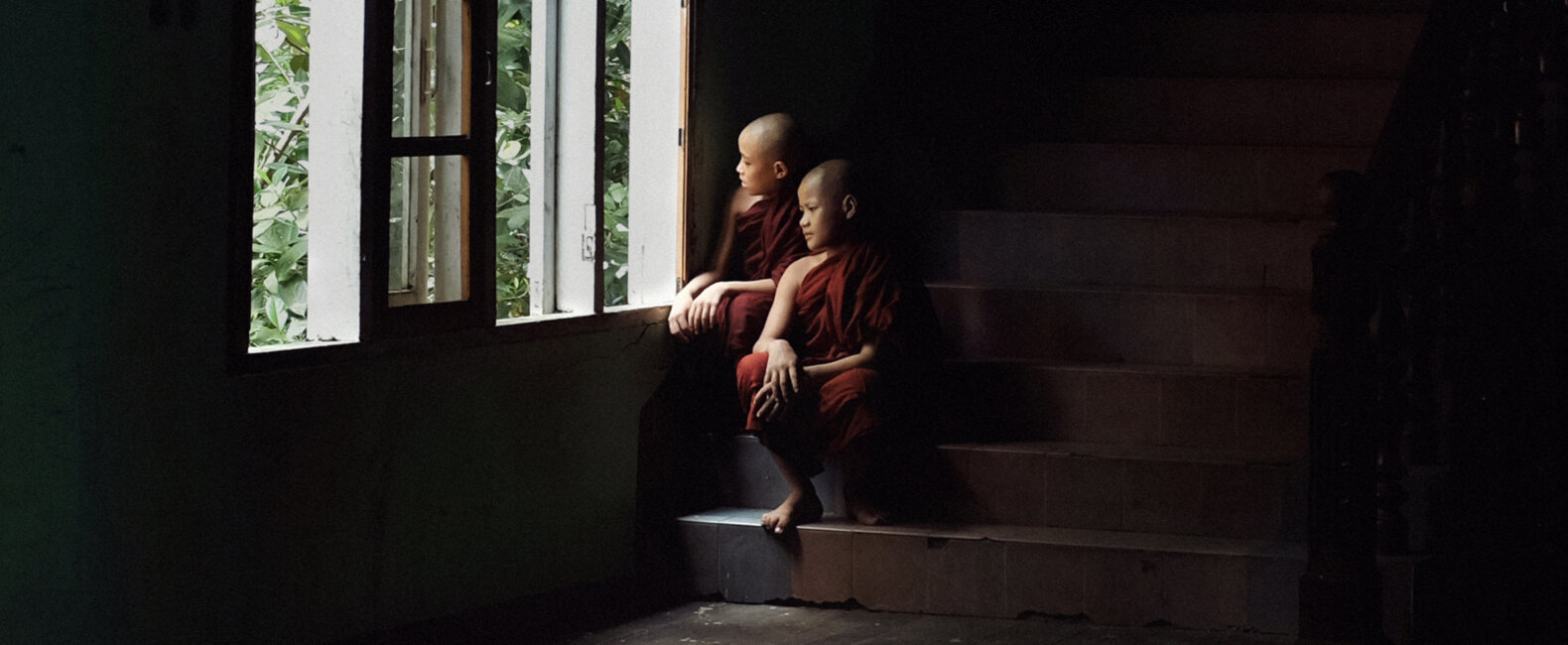It’s very hard to tell what makes a film great. Students spend hundreds of thousands of dollars trying to learn the secret. Critics write hundreds of thousands of words trying to explain it. And still, it usually remains a mystery. But we had a revelation recently while talking to Diego Contreras about his “Unimpossible Missions” series for GE, an ad campaign meant to show off GE’s ingenuity by accomplishing seemingly impossible tasks. What makes Diego’s work great is how he invests a staggering amount of meaning into even the smallest details of his films. There is nothing trivial in his work. Even the snowballs have backstories.
It’s his extreme attention to detail and his refusal to allow the mundane to creep into his stories that consistently push Diego’s films over the top. So it’s no surprise that a year after the original “Unimpossible Missions” spots were created, Diego was asked to create two more — starting with You Can’t Unring a Bell, which premiered last week.
We talked with Diego about the GE series, his creative philosophy, and his recent adventure in Myanmar trying to, once again, accomplish the impossible.
Musicbed: The entire “Unimpossible Missions” series you created for GE is awesome, but You Can’t Unring a Bell might be the best one yet.
Thanks! This shoot in Myanmar was one of the most fun and surreal experiences I’ve ever had.
Can you tell us how the project originally came about, and then we can talk about this latest one?
Let’s go back to the end of 2015. I’d spent most of that year pitching on commercials and literally not winning anything. It was the hardest year, just trying to survive and waiting to see if this directing thing was going to work out. After I finally won my first commercial around October, I got a call from BBDO New York. I’d been working at BBDO the year before, so I already knew this team pretty well. They told me they had this really fun GE project they wanted me to pitch for. Then I found out who I was pitching against — some really big names. People whose work I’d always admired. This was daunting. But, at the same time, it was really exciting and drove me to push even harder. It became one of those obsessive, week-long, no-sleep deals where I poured everything I had into making a treatment to present my dream vision for the project.

I wanted to go beyond the science experiments and explore the backstories of the unique objects and people we’d meet on the journey.
You ended up going in a slightly different direction than they were expecting, right?
I did. The agency creative deck was short and minimal. I’d even say it was a bit mysterious because it didn’t have many visual references or information about the project. But the scripts and concepts were fantastic. The writing was witty, and the stories had so many different layers. Visually though, these were meant to be shot pretty much docu style, with a small crew in a van following the GE engineers as they performed the experiments in real time. Things like Steadicam, aerial shots, jeep convoys, or exploding mannequins were never part of the plan.
But I couldn’t help thinking these films could feel much bigger and more cinematic. I wanted them to play like mini movies with sweeping cameras and aerial shots to tease and establish the landscapes. I wanted to go beyond the science experiments and explore the backstories of the unique objects and people we’d meet on the journey. I tried to inject some mystery and slowly reveal what the GE engineers were up to. So in my stubbornness, I pitched the idea of deviating completely from a documentary approach and shooting them like a movie. Turns out they loved it, and within days we got the green light to pack up and go for it.
How did you describe this new direction to them?
I started by proposing we change the name of the project from “Unimpossible Films” to “Unimpossible Missions.” That was pretty bold and I wouldn’t advise people to do that. But I felt the word mission perfectly described what these films were all about. We were literally sending real-life GE engineers on a wild journey around the world to remote and, at times, hellish destinations to make these experiments happen. Normally for commercials, you’ll hire actors to play the scientists. But these guys were the real deal. They had zero acting experience; and it might not look like it, but they were under so much pressure to make the science work.
Then I described how I wanted to create a new narrative structure for all the films. The focus of the original scripts had mostly been on the experiments, but I wanted to create a strong sense of anticipation leading up to the main event. So I proposed we start each film with a teaser to set up the story and spark some mystery. Then we’d follow our characters on their journeys to the final experiment locations. I built in certain moments to better establish our locations, and I also introduced a few interesting side characters, like the punk-rocker mannequin that we obliterated to show how dangerous lightning can be.

I emphasized how locations were crucial to amp up the scale of the campaign. For example, in A Snowball’s Chance in Hell, I really wanted to make it feel like we were going deep into a metaphorical hell. So [producer] Jon Dawes and I spent days looking for the most menacing steel mills we could find. Somewhere real nasty. And we discovered a very ancient and ominous-looking one in Pavlodar, Kazakhstan. This sounds like a joke, but one of the tourism websites actually described it as, “Like Hell on Earth”!
Come on down!
[Laughs] Exactly. The city has a set of former Soviet Union steel mills that are still active. Unfortunately, that location would have required a 14-hour drive into the middle of nowhere, so it fell through. But luckily, our location scouts ran into another one in Taraz, Kazakhstan, where we ended up shooting. The landscape was so bleak and desolate that the weather forecast showed up as “Smoke.” When we got there, I felt like a kid at Disneyland wishing I could shoot every corner of the place. We could have settled for shooting in the States or somewhere nearby, but we pushed to find the most haunting location we could. It’s small details like this that really help build up the world of the film.
These pieces are all so dense with detail.
I try to cram in as much stuff as possible to tell a bigger story. With A Snowball’s Chance in Hell, I wrote this ridiculous backstory for the snowball after I realized it was the true hero of the film. I wanted people to care about it and root for it to survive. So I started wondering, Where does it come from? And then I thought, Maybe we find it in the mountains of Siberia or Iceland, and we pack it up and transport it inside a special case to the steel mill. It didn’t make any logical sense, but that’s what made it fun and human. And the concept played so well with the ingenuity of the GE brand.
I also thought of small details like the decals and stickers on the snowball’s metal container, or the glass bottles and the car in Catching Lightning in a Bottle. Even the design for the animation and the small icons you see on the main titles were things I explored in the treatment. They’re little details someone might miss, but they add so much personality to the piece. I wanted to push beyond the science and give everything a sense of quirkiness. That’s the kind of thinking that went into all the original spots, and ultimately into the new piece we just finished in Myanmar.
I’m guessing the pieces did well since GE wanted more?
The first set of films did very well and won some awards, which made everyone involved very proud. So sometime during 2016, I got another call from our friends at BBDO: “We want to go shoot some more.” For the first time in my life as a filmmaker, I didn’t have to fight to win something.
Did you have to create a new treatment for the new films?
[Laughs] Yes. I still had to make a treatment throughout a week of sleepless nights. But I love that process. Those treatments force you to figure out the whole thing: the stories, the locations, the characters, etc. You start exploring and imagining the world in your head. And every detail starts coming together.
The only request they had for the new episodes was that I try to make them look different. They wanted a grittier, hand-held approach, and they suggested switching up the team to give it a distinct look. We brought in DP Mátyás Erdély who shot the Oscar-winning film Son of Saul. That was one of my favorite movies of 2015, and it has some of the most amazing hand-held work I’ve ever seen. I jumped on a call with Mátyás to discuss the project, and one of the first things I remember him saying was: “You know, Myanmar is such a gritty place. The most expected approach there would be to go fully hand-held. But wouldn’t it be a lot more poetic if we went for a more controlled, smooth Steadicam feel?” I agreed immediately. So that’s how we ended up having the camera on a Steadicam the entire time in Myanmar, even after I had promised not to!
Were the people in the town all real residents or actors?
Pretty much everyone in the film was a street-casted non-actor. A lot of the people you see in the first part were casted on the fly as we were going around town, finding interesting moments to shoot. The guy opening the store, the barber, the kid monks — all of those moments were captured on the go. And most of the extras watching the experiment were people who lived just around the block and came over to watch us shoot.

The fun thing about shooting in places like Myanmar is there’s no such thing as traffic control or closing down streets. So no matter where you go, there’s always a crowd around the camera. There were some crazy moments like shooting on a live train packed with people moving in and out. We got caught up in the madness and missed the stop where we’d planned to shoot the train exteriors. There was no way back, so we had to stay on the train for much longer than we’d expected, and then improvise the shots elsewhere. It all worked out beautifully in the end. It was one of those spontaneous moments that can make this job so fun. It can be ruthless and chaotic at times, but it’s so rewarding when it all comes together.
With how meticulous you are about your treatments, do you still enjoy spontaneous moments like that?
I’m very big on planning. I go into every shoot day with very detailed shot lists or storyboards. But I’m always up for anything. Some of my favorite moments from You Can’t Unring a Bell came from scheduling time for [1st AD] Aaron Paulson and me to go around with a camera finding interesting things to shoot. Sometimes the spontaneity of unscripted real life is so much more interesting than anything you can come up with on your own. So many of the people you meet in this latest film were cast on the spot for scenes that weren’t originally in the story. And so many of the best locations came from walking around the corner and finding amazing places we didn’t know existed.
Whose idea was the sleeping baby?
That came from Lance Vining and Gary Du Toit, creative directors at BBDO. We had a lot of conversations about how to give some higher stakes to unringing the bell. So the baby thing came up during one of our calls as a bit of a joke: what if a sweet little baby could sleep through the loud ringing of this massive bell? At first it felt crazy. No serious mom would let us put her baby next to that bell. But we kept thinking about it, and it just felt right. It was the most fun way to show the science at work. It became that human element that was missing from the film.

“There’s so much unrest around the world these days, so I make it a mission to inject some emotion into my films.”
How do you take pieces like this from 90% good to 97% good?
On the days leading up to my shoots, I read my treatments and shot lists hundreds of times. With every read, I’m always trying to figure out how I can twist things in a different way, add some humor, or bring a little of my personality into the shots. I think of the motivations for each character and that helps me build out their narratives. If I’m going to be working with monks in Myanmar, I’ll spend hours and hours looking through photos online to find something quirky or unexpected about them. You usually think of monks in a religious setting, but then you find all these photos of them doing fun things like playing soccer. I try to find things that are real but unexpected. I want to portray real life as it is, not in a stereotypical, commercial kind of way. All of that adds up to a bigger, more memorable world.
Why do you work so hard on these projects? What do you get out of it?
I love fighting as much as I can to leave a little bit of myself in my work. There’s so much unrest around the world these days, so I make it a mission to inject some emotion into my films, something uplifting that can make people feel inspired or walk away with a smile on their face. That’s what makes it fun and makes you really care about a project. And if you’re lucky — like I was on these GE films — then the agency you’re working with, the brand, and the loyal crew who supports you along the way to make it happen… they all care about it too.
I daydream every day about making movies and telling stories that are close to my heart. I’m at a stage in my career where making a movie sounds insanely daunting, but I know that if I pour every drop of sweat and every tear into these commercials, I’ll be a little bit closer to ready when the time comes.

















































































